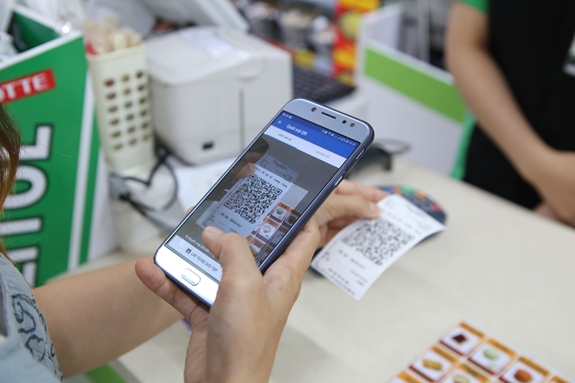
HÀ NỘI — Việt Nam will continue to implement new technologies and policies in its bid to become a cashless country, said banking experts and policymakers in a conference on Friday discussing the current situation of cashless technology in the country.
Speaking at the event, the governor of the State Bank of Vietnam (SBV), Nguyễn Thị Hồng, said the central bank has established numerous policy frameworks for the implementation of electronic payment technologies, such as personal bank accounts based on electronic Know-Your-Customers tech, mobile money and other payment methods including using QR code and chip cards.
In addition, payment solutions and infrastructure have been developing rapidly and integrated with a wide variety of products and services. They have been well-received by consumers for their security, speed and convenience.
Government support policies during the pandemic, which included e-banking fee reductions and other incentives to encourage consumers to reduce cash-based transactions, have resulted in the rapid development of cashless payment technology in the country.
Since 2020, banks have cut over VNĐ2 trillion in banking fees and processed 80 per cent of all personal banking transactions free of charge.
According to SBV Deputy Governor Phạm Tiến Dũng, 95 per cent of all financial institutions in Việt Nam have been developing their own digitalisation strategy. Currently, over 80 banks have offered customers e-banking services; 44 banks have offered mobile banking services and 45 fintech firms offer payment intermediary services. Across the country, there are currently over 90,000 stores that accept QR code payments and nearly 300,000 PoS terminals.
Việt Nam's objectives, in the near future, is to continue to support banking and payment technologies, to connect isolated and rural parts of the country with banking systems, to provide small-amount transactions electronically nationwide, to provide 24/7 automatic financial services and to update electronic payment security features.
In addition, SBV is to work closely with the press in an effort to encourage Vietnamese consumers to switch to cashless payments with an emphasis on security, speed and convenience.
"Making the switch to cashless payments will result in reduced risks for consumers, lower operating costs for financial institutions and improved transparency," said Lê Thị Thúy Sen, head of SBV's Public Communication Department.
During the first nine months of the year, the number of transactions done using the electronic banking system increased by 1.88 per cent and 42.58 per cent in value compared to the same period last year. The number of internet payments increased by 51.16 per cent.
By the end of September, the number of personal bank accounts reached nearly 111 million, a 15.4 per cent increase compared to the same period last year. — VNS
Xem thêm: lmth.yrtnuoc-sselhsac-a-emoceb-ot-smia-man-teiv/6063801/ymonoce/nv.swenmanteiv